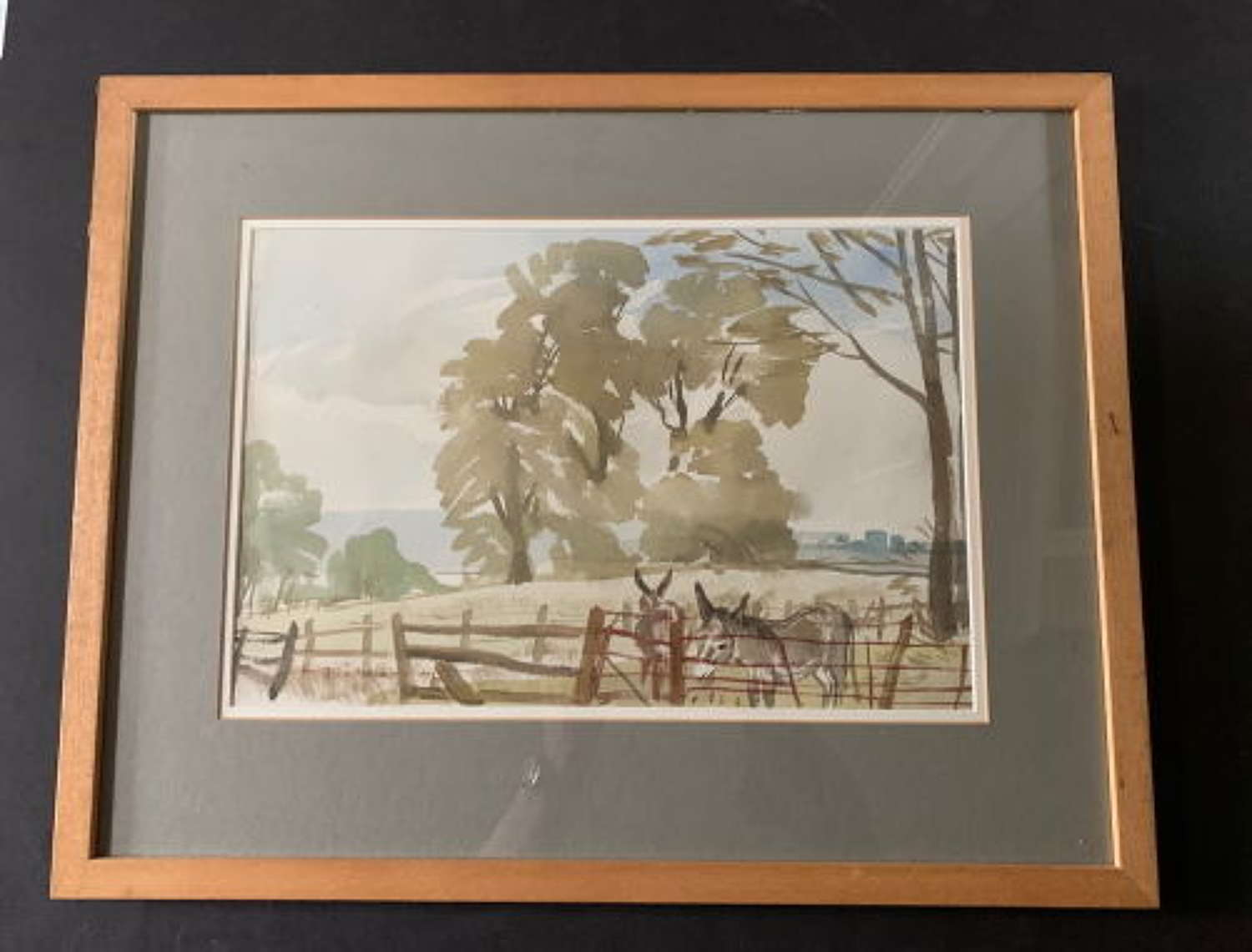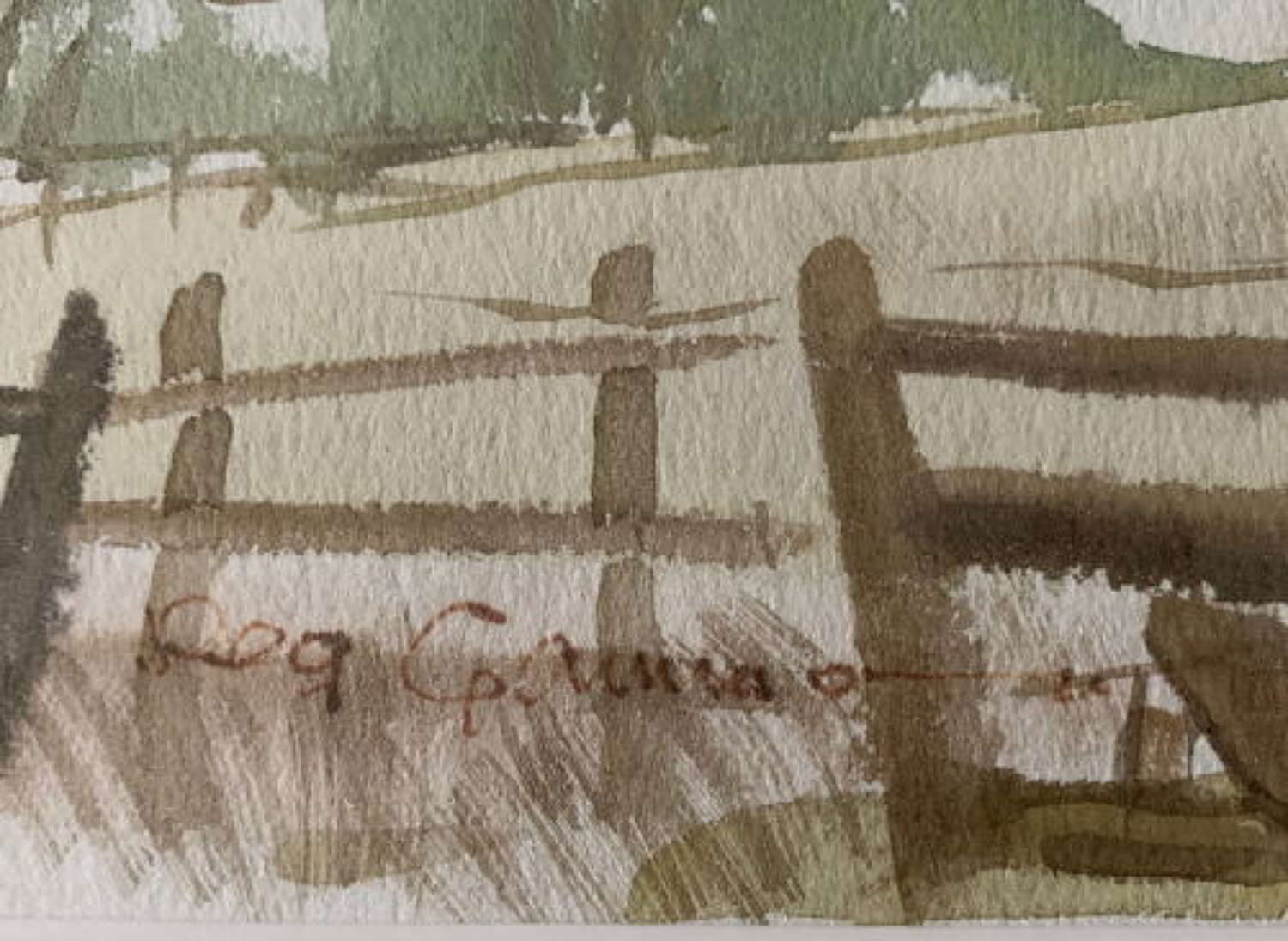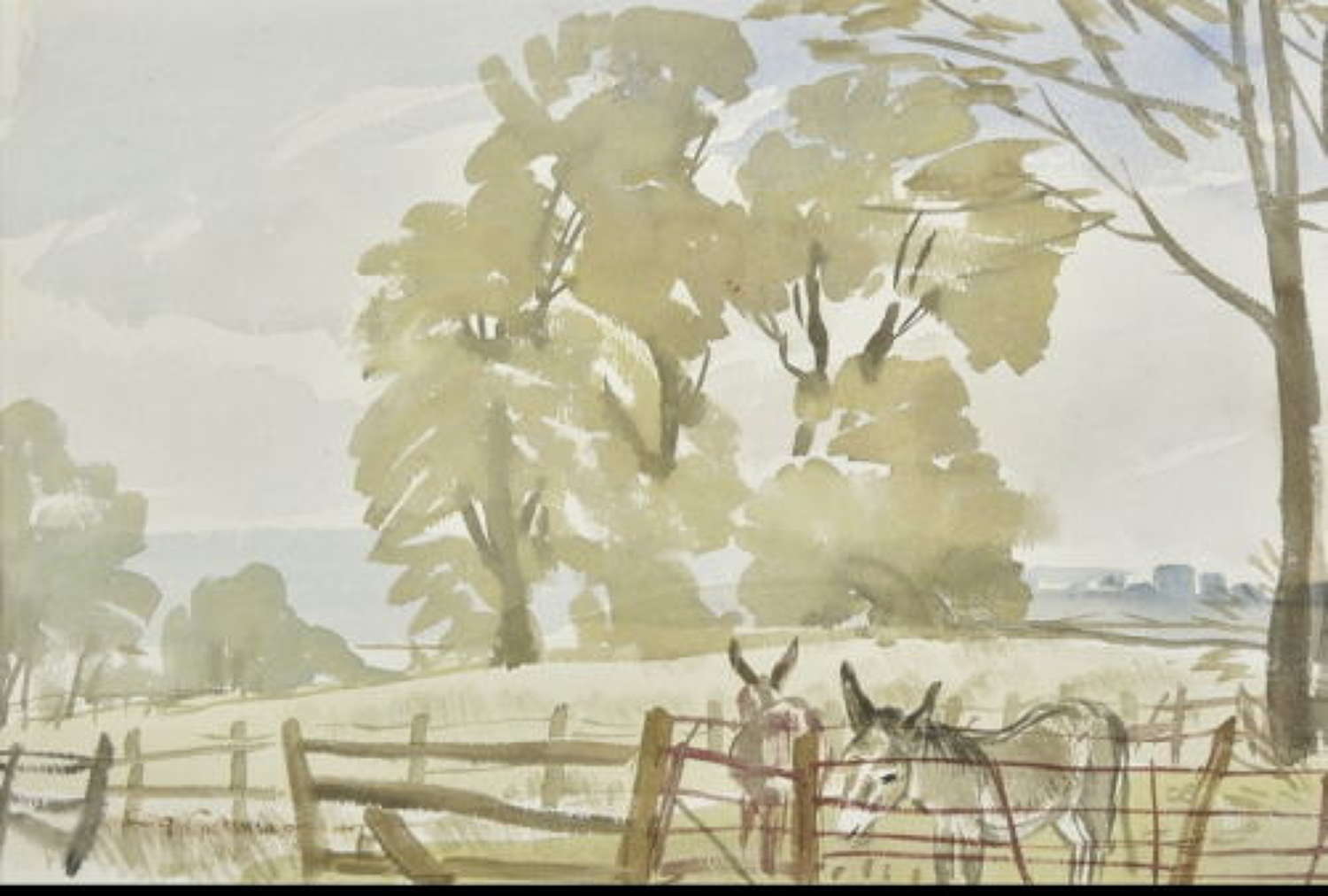
Marlborough Antiques & Interiors |
Tel: 07717101616 Email: enquiries@marlboroughantiques.com Web site: https://www.marlboroughantiques.com/ |
|
Code: 10411
Gammon (Reginald William, 1894-1997). Donkeys, watercolour on paper, depicting a pair of donkeys in a field with trees, signed lower left, mounted, framed and glazed
26 x 39 cm (10.25 x 15.25 in)
Gammon's talent was spotted by the art establishment and he was offered a place at the Slade but declined. He said: "I'd have been in a rut if I'd gone to art school. The teaching wouldn't have suited me." Art school in central London would have been purgatory for such an outdoors-loving young man. Instead he chose the precarious life of a freelance illustrator and writer, specialising in country topics. Private transport was becoming increasingly popular in the 1920s and Gammon found regular work with the Temple Press on titles including the Motor, the Light Car and Motor Cycling. In 1924 he wrote and illustrated his first country feature for the Cycling Touring Club Gazette, a column he continued for 60 years. He placed cartoons in Punch. He was a keen Scout and his "In the Open Air" column for the Scout made such an impression that, when a new editor rashly tried to drop it, Scouts across the world protested so vociferously that the decision was rescinded. His break into Fleet Street came in 1930 with a retainer from the News Chronicle. He would take his motorcycle to the Ascot races, draw the scene and hare back to the office with a completed sketch for the next day's paper. He covered the Monte Carlo rally and he sketched motor-racing heroes like Henry Seagrave and Malcolm Campbell at Brooklands. But his heart lay in the countryside and he found a mass audience of newspaper and magazine readers for the rural Britain he depicted so lovingly week after week. Whether sketching the crags of Bowfell in the Lake District or a pretty village street in Sussex, Reg Gammon offered readers a dreamy world where a refreshing cup of tea and a scone always seemed to be just around the corner at the end of a day's cycling, motoring or rambling. The Second World War changed all that. Newsprint rationing killed off the magazines and newspaper pages on which he had relied for his income. The family packed their bags and moved to the Black Mountains in South Wales, where Reg set himself up as a hill farmer in the Llanthony valley near Abergavenny. There he introduced milk production and crop growing to the valley and successfully campaigned for electricity and the telephone to be brought to Llanthony.
Gammon happily scratched a meagre living from his 40-acre farm for 20 years. This period was of lasting value to him as an artist. He had known the country as an illustrator/journalist and organiser of hikes and cycling trips. Now he got to grips with the harsher realities of the land and its people. He kept up his painting and it was during the final Llanthony years that he made the momentous change to oils. At last he could follow the trail blazed by his heroes Rouault, Bonnard, Chagall and, above all, Gauguin. He moved to Somerset but his increasingly sure, colour-charged landscapes were not of the Somerset levels which surrounded him. Instead he painted Brittany, remote Scotland, wild Ireland, the Welsh hills . . . romantic but unsentimental landscapes dominated by peasant figures working the land. He exchanged his illustrative disciplines in perspective and in colour for a wholly Expressionist view. Donkeys were blue. Calves became bright green. Red was ever-present . . . it was his favourite colour and, he said slyly, helped sell his paintings. Reg Gammon's close association with the Royal West of England Academy was formalised by his election as a full member in 1966. From then on his work was an annual highlight of the autumn shows at the academy's beautiful galleries in Clifton, Bristol. He became an institution at RWA previews, a sprite-like figure with twinkling eyes and a generous word for his artist colleagues. He had a healthy distrust of popularity, but his reputation grew and in 1986, the year after an outstanding retrospective at the RWA, came his first London one-man show, at the New Grafton Gallery. The reviews were excellent and four one-man exhibitions at the New Grafton followed, before a 100th birthday retrospective at the RWA. After such a long, happy and fulfilled life - the prolific flow and high standard of his work continued until the end - Reg Gammon died with a single regret. He had longed to see in the 21st century.
Condition : Very Good
Materials : Watercolour
Origin : English
Manufacture Date : c1960


